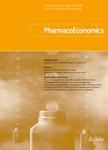版权所有:内蒙古大学图书馆 技术提供:维普资讯• 智图
内蒙古自治区呼和浩特市赛罕区大学西街235号 邮编: 010021

作者机构:Clinical Epidemiology Unit and Department of Medicine Postgraduate Program University of Toronto Toronto Canada Division of General Internal Medicine and The Institute for Clinical Evaluative Sciences Sunnybrook Health Science Centre North York Canada Departments of Medicine Surgery. and Health Administration University of Toronto Toronto Canada
出 版 物:《PHARMACOECONOMICS》 (Pharmacoeconomics)
年 卷 期:1994年第5卷第4期
页 面:343-350页
核心收录:
学科分类:1007[医学-药学(可授医学、理学学位)] 1204[管理学-公共管理] 0201[经济学-理论经济学] 10[医学]
摘 要:The growing burden of prescription drug costs has focused attention on factors which influence physicians prescribing decisions. We hypothesised that third party coverage of prescription costs would elicit selection of expensive drugs, but that this tendency could be moderated by price reminders. In a mailed survey, primary care physicians throughout Ontario (n = 1072) were provided with the clinical scenario of a patient with an infectious exacerbation of chronic obstructive pulmonary disease, and asked to select diagnostic tests as well as 1 of 6 antibiotics. Two antibiotics were expensive (ciprofloxacin and cefaclor;average price $Can52.23), and 4 inexpensive [amoxicillin, cotrimoxazole (trimethoprim/sulfamethoxazole), erythromycin and tetracycline;average price $Can2.80]. Neither expensive drug is considered first line therapy for the condition described. Questionnaires differed in the presence or absence of drug benefit coverage and price information. The response rate was 71%. With third party cost coverage and prices shown, 18% of respondents selected an expensive antibiotic. This increased to 38% when the prices were omitted [odds ratio 2.72;95% confidence interval (CI) 1.61, 4.60;p 0.001], and decreased to 8% when the patient was said to have no drug benefits coverage (odds ratio 0.40;95% CI 0.19,0.84;p 0.01). On a control questionnaire in which neither cost coverage nor prices were specified, and in which respondents were asked to indicate the most appropriate antibiotic, 37% selected an expensive drug (relative to the version giving both prices and cost coverage: odds ratio 2.70;95% CI 1.62, 4.53;p 0.001). We conclude that inappropriate selection of expensive antibiotics is increased when the patient has full drug benefit coverage but reduced when physicians are reminded of drug prices. These results support assessment of a price-oriented educational intervention in an effort to reduce inappropriately expensive prescribing.